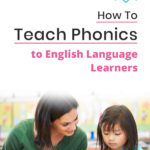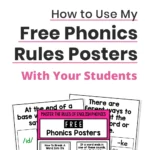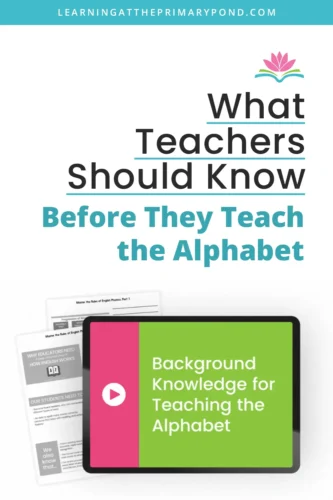There are so many rules in the English language! It can be overwhelming to try and name (and remember!) them all. The other tricky thing is that there are almost always exceptions to the rules!
In this blog post, I’ll do a quick overview of how to teach students when to use “c” or “k” at the beginning or end of a word. I’ll also provide a couple of activity ideas for teaching whether to use “c” or “k.”
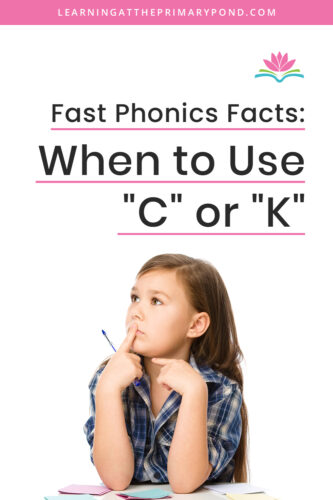
Using C or K to Start a Word
Let’s first talk about the /k/ sound at the beginning of a word. The general rule is to use the letter “c” before consonants and the vowels “a,” “o,” and “u.” Examples of this include:
- clap, crown, cat, cod, cut
The letter “k” is used for the /k/ sound before the vowels “i” and “e.” Examples of this include:
- kid, keep
Some exceptions to the above rule include:
- Kate, koala, kangaroo, Korea, kayak
If the /k/ sound comes before the letter y at the beginning of a word, it could be spelled “c” or “k.” Examples of this include:
- cycle, Kylie
In “cycle,” the first c represents the /s/ sound. This is called a “soft c” sound, whereas the /k/ sound is called a “hard c” sound. To read a bit more on this particular topic, check out my blog What Are the Hard and Soft G and C Sounds? What Are Some Ideas For Teaching the Hard and Soft G and C Sounds?
Using C or K at the End of a Word
When we look at the end of a word, it gets a bit more complicated. The /k/ sound at the end of a word can be represented with a few different spellings.
One of those spellings is the digraph “ck.” A digraph is made up of two letters that work together to make one sound (in this case, the c and k are working together to represent the /k/ sound). The letters “ck” are used at the end of a word or syllable after a single short vowel sound. Examples of this include:
- luck, stick, Jack, peck
The letter “k” by itself can also represent the /k/ sound at the end of a word as well. The letter “k” is used after any sound except a short vowel sound (such as long vowels, consonants, or other vowel patterns). Examples include:
- milk, seek, book, pork
Using “ck” or “k” at the end of words is most common in one syllable words. In multisyllabic words, however, sometimes the letter “c” is used by itself at the end of a word to represent the /k/ sound. Here are some examples:
- clinic, music, epic
A few exceptions to the above rules include:
- arc, disc
When Do You Teach Whether to Use C or K?
In my phonics program, From Sounds to Spelling, I teach the letters “c” and “k” as well as their /k/ sounds as part of the Kindergarten program. I also introduce the “ck” digraph later in the year.
Toward the end of 1st grade, I introduce the soft c sound.
One important note: Mastery of these sounds (as far as spelling goes) is not expected until after 2nd grade. So while I introduce these concepts to help students with reading, I don’t expect them to become pros at spelling words with these sounds.
Activities for Teaching When to Use C or K
Different phonics programs, of course, present the “rules” of spelling differently.
Explicit instruction has been shown to be the most effective way to teach a skill. To use explicit instruction, you’ll introduce the rule, have students read and spell some words with it, provide corrective feedback, and eventually assess the skill. You’ll also continue to reinforce it in the future.
However, let’s say that you’re working with an advanced group (maybe Kindergarten or early 1st graders) who don’t necessarily need to master the skill yet, but are ready to explore it.
With these advanced students, you might invite them to self-discover a rule by looking for patterns. For instance, you could have students do a word sort of CVC words that all begin with the /k/ sound.
- kit, kid, Ken, kin, Kip, cat, cup, cob, cot, cap, cop, cut, can, cab
On one side of the sort could be the words that start with “c” and the other is words that start with “k.” It might be enough just to have students sort the words and the takeaway is “Sometimes the /k/ sound is made with the letter ‘c,’ and other times the /k/ sound is made with the letter ‘k’ at the beginning of a word.”
But for kids who are ready, you can take it a step further. Once the words are sorted, have them highlight the second letter. See if they notice any patterns. Eventually, this may help them reach the rule (on their own!) that the letter “c” is used before the vowels “a,” “o,” and “u,” and “k” is used before “i” and “e.”
Now let’s talk about some other ways to practice these c/k rules.
The use of dictation can be a powerful activity for this skill. Dictation is the practice of saying letter sounds, words, or sentences aloud to students and asking them to write / spell them. (For more info on the value of dictation, check out this blog entitled What Is Dictation and Why Is It Valuable?)
When dictating words that include the /k/ sound, have students really think through what letter/sound is coming before/after the /k/ sound. For example, if you are having them dictate the word “clasp,” the question you want them to answer first is “What comes right AFTER the /k/ sound?” In this case, it’s the /l/ sound represented by the consonant “l.” If they have been introduced to the spelling rule, the student will then know to use the letter “c” instead of a “k” to begin the word.
Similarly, if you are asking a student to dictate the word “look,” they should ask themselves “What comes right BEFORE the /k/ sound?” With this word, they’ll hear the /oo/ sound. Since this is not a typical short vowel sound, only the “k” is used instead of the “ck.” Getting students to think through these options before actually putting their pencil to paper is really high-level thinking!
Decodable texts are another great tool for practicing “c” vs “k.” Before reading, have students look through the text to highlight the /k/ sound at the beginning or end of a word. This will help them focus on the sound and spelling as they decode to read the text.
Conclusion
I hope this information on when to use “c” or “k” is helpful to you! If you need more resources to teach this or other phonics skills, check out my phonics program, From Sounds to Spelling.
This program contains complete lesson plans, lots of activities, picture and word sorts, decodable texts, phonics posters, and more!
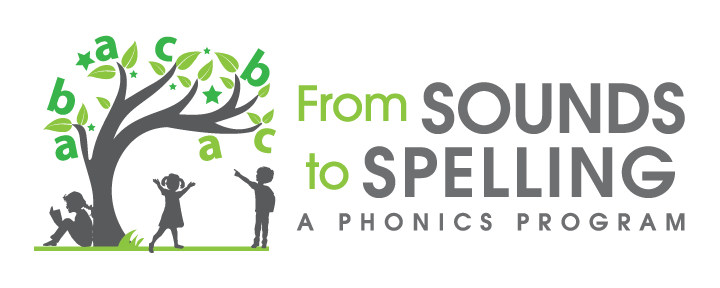
Happy teaching!

